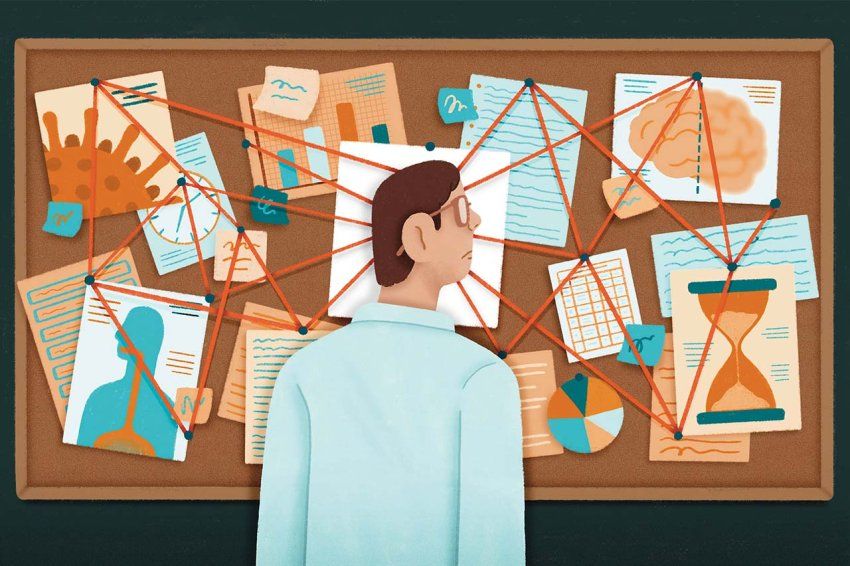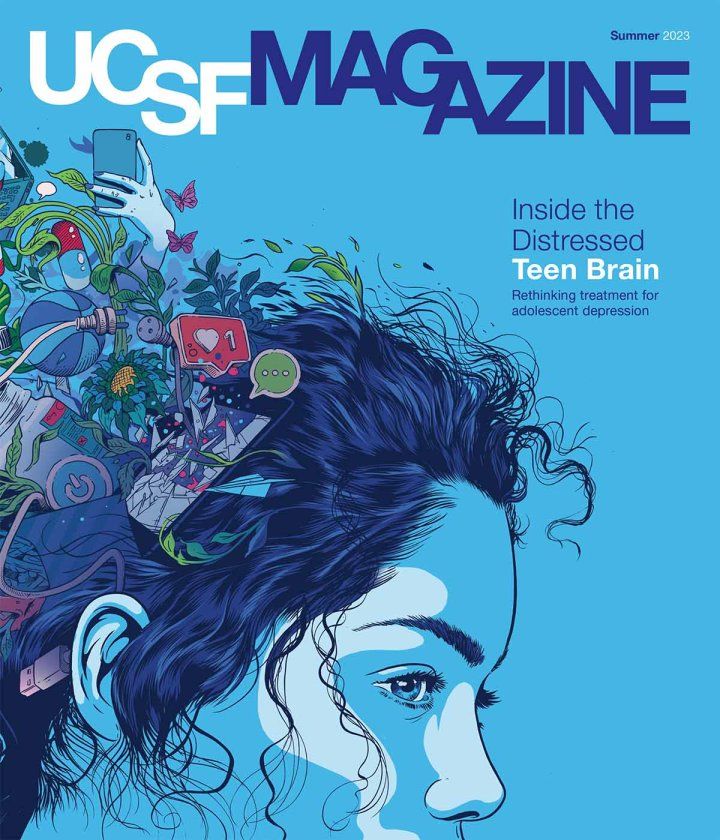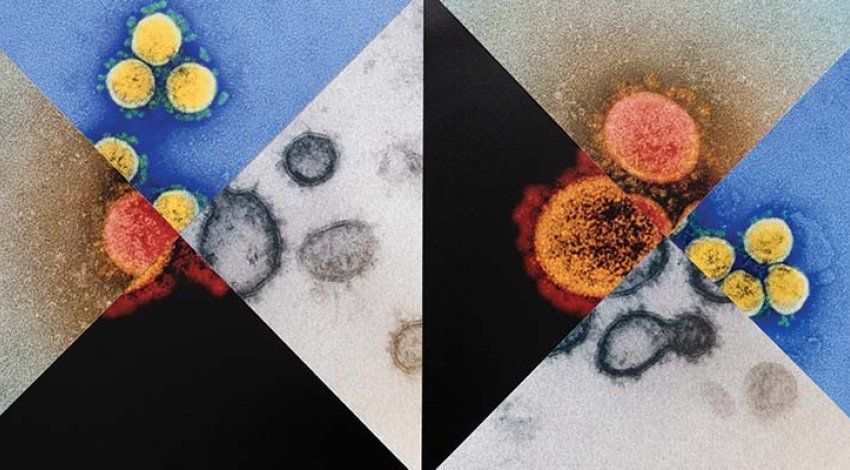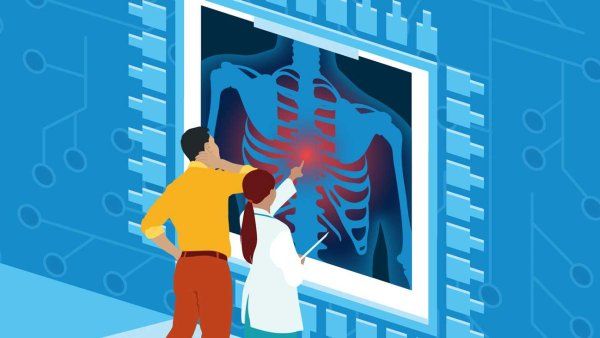
What’s New in the Search for a Long COVID Cure?
Effective therapies that target the condition’s root causes could be a few years away.

UCSF infectious disease specialist Michael Peluso, MD, who co-leads one of the world’s oldest studies of long COVID, discusses the condition’s mysteries. “There is no smoking gun,” he says. “If that were the case, we would have figured this out two years ago.”

What exactly is long COVID?
It refers to unexplained symptoms that are new or worse since someone had acute COVID and that are not attributable to other causes. They persist for at least three months after COVID’s onset and impact a person’s quality of life. Between 15 million and 30 million Americans may have it.
But there is not just one long COVID syndrome. Some people have profound neurocognitive symptoms, including difficulty concentrating. Others have cardiopulmonary symptoms that reduce their capacity to exercise. Others have disorders in their autonomic nervous system, with unexplained swings in their heart rate or blood pressure. And these categories are not monolithic. People can have symptoms across the categories.
I don’t think anybody believes a single pathological mechanism causes all cases of long COVID. It’s likely that different types of long COVID have different drivers.
Who is most at risk?
Long COVID can happen to anyone, but women are at higher risk than men. No one knows why. We’ve just started a collaboration to specifically address that question. People who are older or middle-aged are also more affected, as are those with pre-existing conditions like diabetes or obesity.
I tell my patients that outside of not getting COVID, the most important thing people can do to reduce their risk of developing long COVID is to be up to date on their vaccinations. An open question – and it’s an important question – is whether treatment with an antiviral during the acute phase of the infection will lower someone’s likelihood of developing long COVID. Another question is whether reinfections, which many people are now experiencing, will increase the risk of long COVID.
Before COVID, you led a UCSF study into how HIV infection persists. A few weeks after COVID began, you and your team turned on a dime to create a study called LIINC (Long-term Impact of Infection with Novel Coronavirus). Why?
We saw that many scientists were focused on acute infection, because it was so scary, but not many were paying attention to what would happen next. When we set up LIINC, long COVID wasn’t even a known entity. It felt like we were venturing into the unknown. We began to study post-COVID immunology, but we knew that many other infections have postinfectious complications, so we made sure to ask our study participants about that.
LIINC was one of the world’s first studies of long COVID. We are now deeply involved in national research efforts as well. We helped the NIH design and implement its Researching COVID to Enhance Recovery (RECOVER) initiative, and we’re one of its study sites.
Is long COVID primarily a neurological disease?
Maybe. The nervous system could be responsible for a lot of long COVID symptoms, and neurological symptoms seem to be the ones that are talked about the most. Brain fog is one of the most significant and debilitating symptoms in some people. Since the beginning, we at LIINC have worked closely with other UCSF researchers who are specifically investigating brain fog. But there are many people with long COVID who do not have neurological symptoms. It seems that many different organ systems might be involved.
What are you learning about the underlying mechanisms of long COVID?
When LIINC began, early on we observed that people with long COVID had higher levels of inflammation. Some of our work has shown that people with heart symptoms or brain fog due to long COVID have higher levels of inflammation in their blood. Then we started exploring the causes of that inflammation. We found that many people with long COVID have “leaky gut,” or higher levels of bits of gastrointestinal bacterial and fungal organisms elsewhere in their bodies. And those levels are directly related to higher amounts of inflammation in their blood.
We’ve also been interested in the relationship between long COVID and prior Epstein-Barr infection, because people with reactivation of that infection appear twice as likely to report having long COVID. And, interestingly, they seem to be more likely to have brain fog symptoms.
The hottest topic now is viral persistence. We suspect that inflammation can be driven by pieces of viral protein lingering in the body. We recently published a paper on people with brain fog or new depression or anxiety symptoms after COVID. It found they had COVID proteins in their blood months after they got COVID. That was a very surprising observation, because the virus that causes COVID is not supposed to persist. We are planning follow-up studies on this topic now.
How soon will we see treatments targeting the causes of long COVID?
Today, 100% of long COVID management targets symptoms, not underlying biological pathways. I’d like to speculate that sometime this year, there will be clinical trials targeting concerns like viral persistence or inflammation. I hope some lead quickly to answers and effective therapies that fix the underlying problem.
Do people still need to worry about COVID?
I continue to be extremely worried about it. I spend all my time interacting with people who were fine before they had COVID and are now debilitated. Many have lost their jobs; their relationships have been affected; they are struggling. Even with all the progress that has been made with vaccines and treatments, I am still worried. There’s a real reckoning to be had between balancing the long-term consequences of getting COVID, which we are only beginning to understand, and everybody getting back to their normal lives. It’s hard for me to say that something that still causes tens of thousands of new infections a week, and kills hundreds of people a week, and has all of these long-term effects, is in the background.



